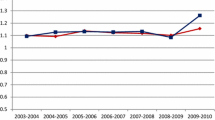Abstract
Computing the productivity of a dozer involves correcting a set of multivariate values. The existing dozer-productivity computation models utilize unique sets of input variables, formulae, and experimental data. However, these are considered appropriate only for performing comparative studies, not for obtaining a precise productivity value. With a set of input variables obtainable from a job site, it is important for an earthwork manager to quickly identify a model that computes the dozing productivity and to compute the productivity by implementing the model. Expediting the productivity computation intertwines with the determination of eco-dozing performance, which relates to the fuel consumption per unit earthwork production. This paper presents a dozer-productivity correction method (DPCM) that computes the variations between the existing productivity models. This method can determine the sensitivity in selecting a model to compute the productivity. This study is of value to researchers because it considers the productivity-correction factors exhaustively and consistently while expediting the computation. It is also of relevance to earthwork managers because it illustrates the variability in the outputs from different models. Hence, it facilitates the estimation of fuel efficiency of a dozing operation. The test case verifies the validity of the computational method.
Similar content being viewed by others
References
Caterpillar Inc. (2010). Caterpillar performance handbook, 40th Ed., Caterpillar Inc, Peoria, USA, pp. 1(17)–1(52).
Church, H. K. (1981). Excavation handbook, McGraw-Hill, New York, USA, pp. 12(4)–12(10).
Day, D. A. and Benjamin, N. B. (1991). Construction equipment guide, 2nd Ed., John Wiley & Sons, New Jersey, USA, pp. 99–125.
Edwards, D. J. and Holt, G D. (2000). “ESTTVATE: A model for calculating excavator productivity and output costs.” Engineering, Construction and Architectural Management, Emerald, Vol. 7, No. 1, pp. 52–62, DOI: https://doi.org/10.1108/eb021132.
Hicks, C. (1993). “Haul-unit performance.” Journal of Construction Engineering and Management, American Society of Civil Engineers, Vol. 119, No. 3, pp. 646–654, DOI: https://doi.org/10.1061/(ASCE)0733-9364(1993)119:3(646).
Komatsu Inc. (2009). Specifications and application handbook, 30th Ed., Komatsu Inc., Tokyo, Japan.
Lee, D. E. and Arditi, D. (2006). “Automated statistical analysis in stochastic project scheduling simulation.” Journal of Construction Engineering and Management, American Society of Civil Engineers, Vol. 132, No. 3, pp. 268–277, DOI: https://doi.org/10.1061/(ASCE)0733-9364(2006)132:3(268).
Limsiri, C. (2011). “Optimization of loader-hauler fleet selection.” European Journal of Scientific Research, EuroJournals, Vol. 56, No. 2, pp. 266–271.
Marzouk, M. and Moselhi, O. (2003). “Object-oriented simulation model for earthmoving operations.” Journal of Construction Engineering and Management, American Society of Civil Engineers, Vol. 129, No. 2, pp. 173–181, DOI: https://doi.org/10.1061/(ASCE)0733-9364(2003)129:2(173).
Moselhi, O. and Alshibani, A. (2009). “Optimization of earthmoving operations in heavy civil engineering projects.” Journal of Construction Engineering and Management, American Society of Civil Engineers, Vol. 135, No. 10, pp. 948–954, DOI: https://doi.org/10.1061/(ASCE)0733-9364(2009)135:10(948).
Naoum, S. and Haidar, A. (2000). “A hybrid knowledge base system and genetic algorithms for equipment selection.” Engineering, Construction and Architectural Management, Emerald, Vol. 7, No. 1, pp. 3–14, DOI: https://doi.org/10.1108/eb021128.
Peurifoy, R. L., Schexnayder, C. J., and Shapira, A. (2009). Construction planning, equipment, and methods, 7th Ed., McGraw-Hill. New York, USA, pp. 171–221.
SAE International (2003). “Earth-moving machinery Crawler and wheel tractor dozer blades Volumetric ratings.” SAE J/ISO 9246, SAE International, Pennsylvania, USA, pp. 1–10.
Shi, J. and AbouRizk, S. S. (1998). “An automated modeling system for simulating earthmoving operations.” Computer-Aided Civil and Infrastructure Engineering, Wiley, Vol. 13, No. 2, pp. 121–130, DOI: https://doi.org/10.1111/0885-9507.00092.
Shi, J. J. (1999). “A neural network based system for predicting earthmoving production.” Construction Management and Economics, Taylor & Francis, Vol. 17, No. 4, pp. 463–471, DOI: https://doi.org/10.1080/014461999371385.
Tam, C. M., Tong, T. K., and Tse, S. L. (2002). “Artificial neural networks model for predicting excavator productivity.” Engineering, Construction and Architectural Management, Emerald, Vol. 9, Nos. 5–6, pp. 446–452, DOI: https://doi.org/10.1108/eb021238.
Touran, A., Sheahan, T. C., and Ozcan, E. (1997). “Rational equipment selection method based on soil conditions.” Journal of Construction Engineering and Management, American Society of Civil Engineers, Vol. 123, No. 1, pp. 85–88, DOI: https://doi.org/10.1061/(ASCE)0733-9364(1997)123:1(85).
Xiaoping, B., Gengyun, Z., and Xiaojing, Z. (1996). “Predicting vehicle turbocharged diesel engine performance at altitude (No. 961826).” SAE Technical Paper, pp. 57–64, DOI: https://doi.org/10.4271/961826.
Yang, J., Edwards, D. J., and Love, P. E. (2003). “A computational intelligent fuzzy model approach for excavator cycle time simulation.” Automation in Construction, Elsevier, Vol. 12, No. 6, pp. 725–735, DOI: https://doi.org/10.1016/S0926-5805(03)00056-6.
Acknowledgements
This work was supported by the National Research Foundation of Korea (NRF) grant funded by the Korean government (MSIT) (No. NRF-2018R1A5A1025137).
Author information
Authors and Affiliations
Corresponding author
Rights and permissions
About this article
Cite this article
Kim, RH., Park, YJ. & Lee, DE. Dozer Productivity Correction Method for Eco-Dozing Assessment. KSCE J Civ Eng 23, 2829–2838 (2019). https://doi.org/10.1007/s12205-019-0180-5
Received:
Accepted:
Published:
Issue Date:
DOI: https://doi.org/10.1007/s12205-019-0180-5




